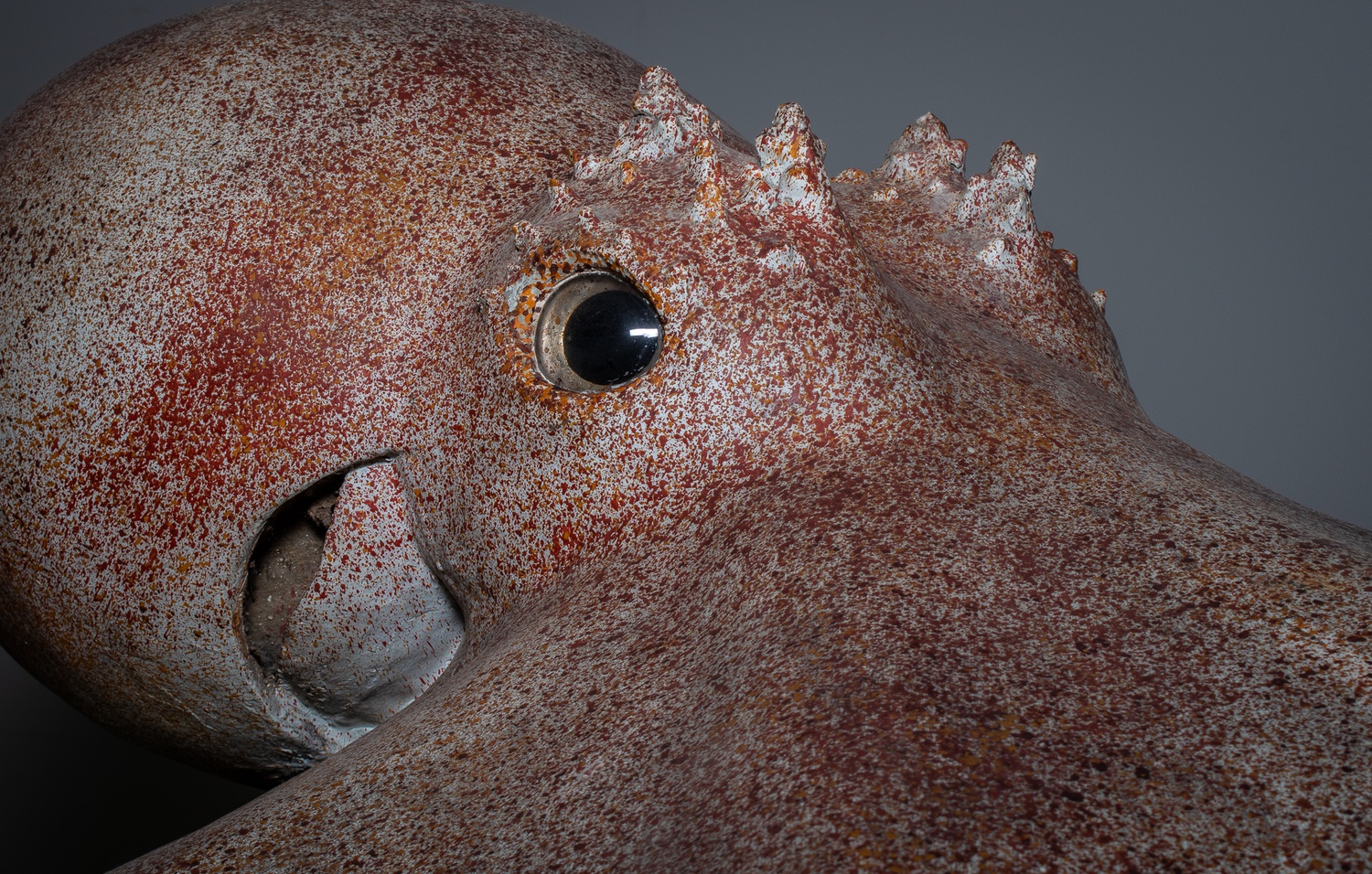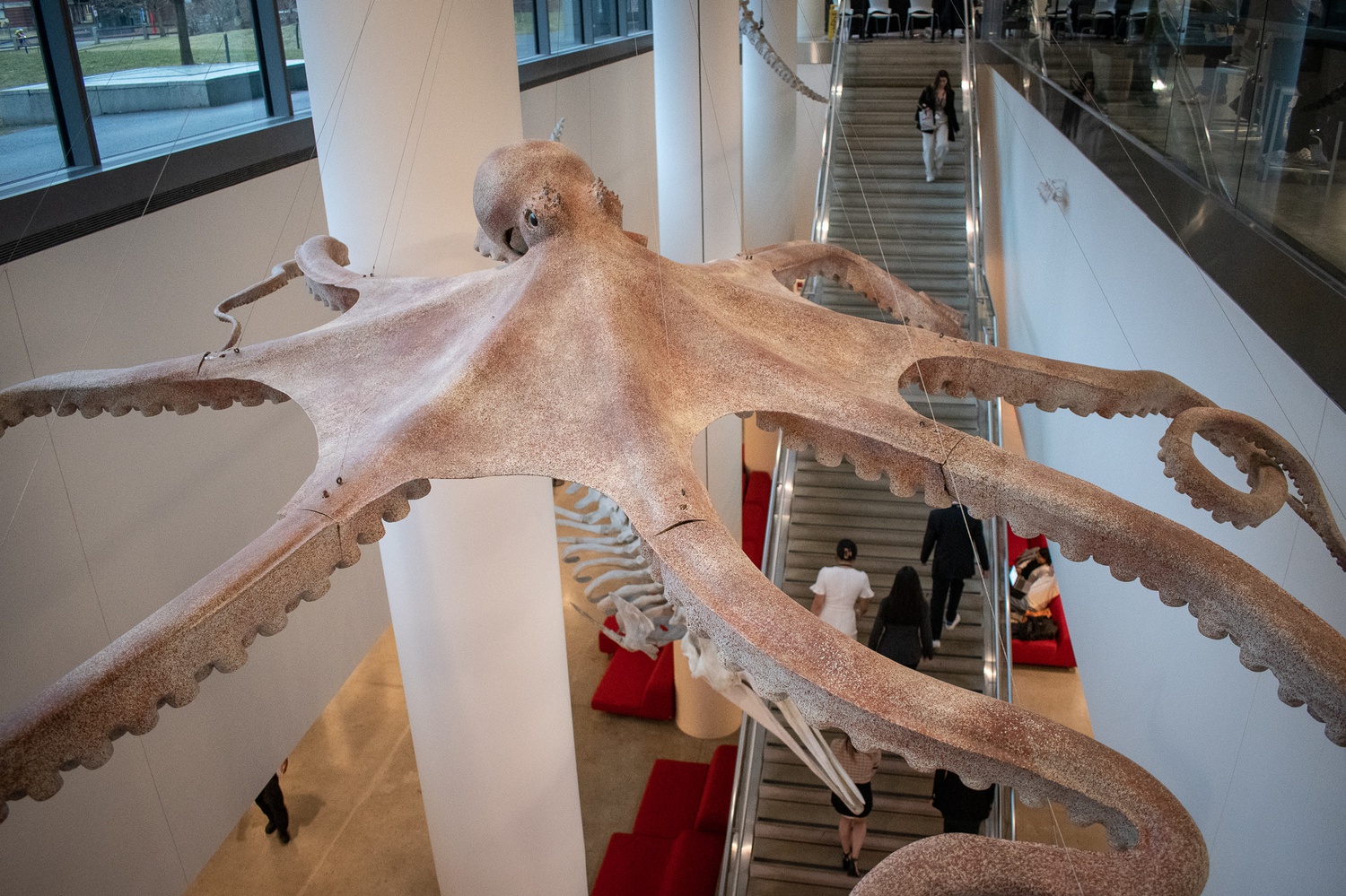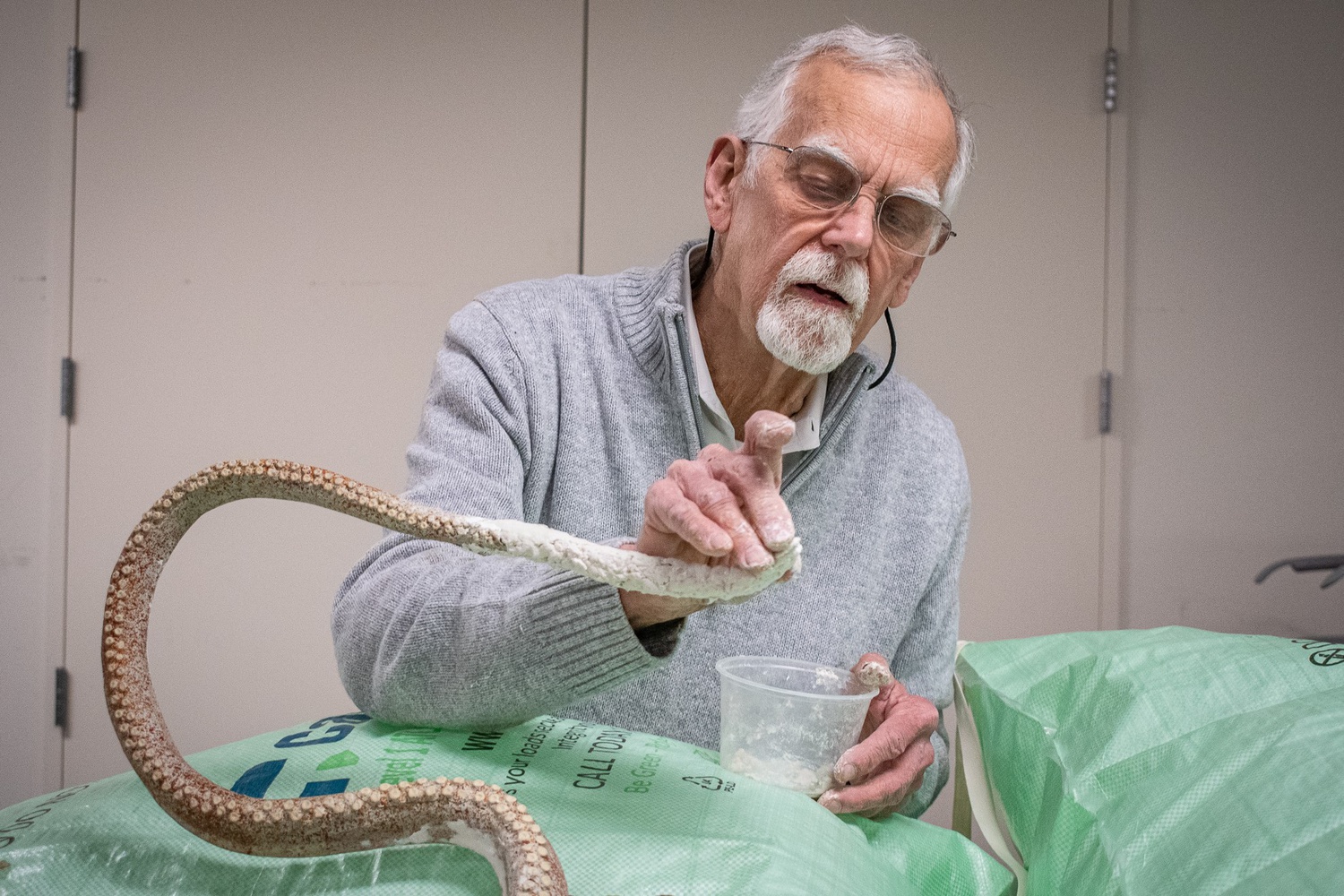
A Centuries-Old Papier-Mâché Octopus Swims Northwest, Finds a “A Second Life”
After decades of collecting dust in a Harvard Museum of Natural History classroom, a life-size papier-mâché model of an octopus has found a new home. With each of its looping tentacles stretching out about eight feet, it lies suspended above a grand staircase in the spacious, modern, glassy foyer of Harvard’s Northwest Building, home to labs, classrooms, and offices for Harvard’s School of Engineering and Applied Sciences.
The model of the Pacific octopus, known as the Enteroctopus dofleini, has been in Harvard’s hands for the last 140 years. In the early 1880s, scientific artist and illustrator James H. Emerton created this object and one other with guidance from a zoologist from Yale and a modeler from the Smithsonian. The other object deteriorated completely after 90 years on display and in the care of Yale. Emerton never saw the animal in person, instead leaning on scientific literature and one scientist’s testimony about its size.

Harvard’s octopus was first displayed in a Harvard Museum of Comparative Zoology gallery before being moved into a classroom in the Museum of Natural History, where it remained hidden from the general public and began to deteriorate.
“I went to multiple meetings in this classroom, and it was just kind of there, and we got used to it,” says Sylvie Laborde, a Senior Designer and Acting Exhibition Director for the Harvard Museums of Science and Culture.
But after a series of conversations and initial measurements, the octopus’ second life began as Terry Chase, an expert in the design of natural history exhibits, led a painstaking, careful restoration process. In a room in the basement of the Northwest Building, the restoration team repaired cracks and rebuilt the tips of the arms.
“From a conservation perspective, the MCZ was very interested in restoring the object with the same materials that were used to build it originally,” Laborde says. Preservation of the octopus’ historic and artistic value, rather than precise scientific accuracy, guided the team’s effort.
This made for a harder restoration process, Laborde explains, as the team needed to work with papier-mâché instead of more modern model-making materials like epoxy, a type of resin. They also tested out a variety of painting techniques, trying to match the octopus’ original color and texture.
The team ultimately hoisted the octopus up using an elaborate cable system, and the eight-armed artifact now hangs above the staircase, which guides passers by into a cavernous basement.
“Having it at Northwest kind of gives it a second life,” Laborde says.

The octopus hangs next to two other creatures: the skeletons of a northern bottlenose whale and an orca, which were collected in the 1880s and ultimately acquired by Harvard’s Museum of Comparative Zoology. The skeletons spent nearly 80 years in the attic of the MCZ mammalogy department before their restoration and relocation to the space above Northwest’s main staircase in 2009, just a year after the building’s construction.
Other preserved sea creatures dot Harvard’s campus, including delicate and detailed glass models of jellyfish, anemone, sea slugs, and other invertebrates housed in the MCZ, which restored those models over an eight-year period.
The MCZ expected to find about 60 models in their collections. Instead, they found 430 invertebrates across a variety of Harvard departments, with disparate pieces sometimes stored away in envelopes and boxes.
The glass sea creatures, created by artists Leopold and Rudolf Blaschka, are predecessors of Harvard’s “Glass Flowers,” a collection of 4,300 glass botanical models originally used to help undergraduates study.
“The nature of their restoration was based on the fact that they are beautiful objects,” Laborde says of the glass invertebrates exhibit. “They may not carry the same scientific value today as the day they were created, but the craftsmanship and the beauty of the object make it become a different value.”

Harvard students pass by their own sea creature display whenever they walk by the Northwest Building stairs. This constant stream of visitors can engage with the whale skeletons and, now, the octopus model — a possibility that went unrealized when the objects were stashed away in hidden corners of campus.
“I think appreciation may come with having a little knowledge about the history of an object. Decoration might mean it’s nice to look at, but there’s nothing really beyond that,” says Breda M. Zimkus, the director of collections operations at MCZ. “Appreciating something means you can make a connection in some sort of way.”
The octopus is currently accompanied by a small graphic panel entitled “An Ocean Giant” that supplies curious students with a brief history of the octopus. The MZC and HMSC are also hoping to add lights to the octopus, which would illuminate it in the Northwest Building at night.
“I do think people may pass by and miss it,” Laborde says. “People will get used to it. But the beauty of where it is now is that new students come every year.”
—Magazine writer Maeve T. Brennan can be reached at meave.brennan@thecrimson.com.
—Magazine writer Ciana J. King can be reached at ciana.king@thecrimson.com.


